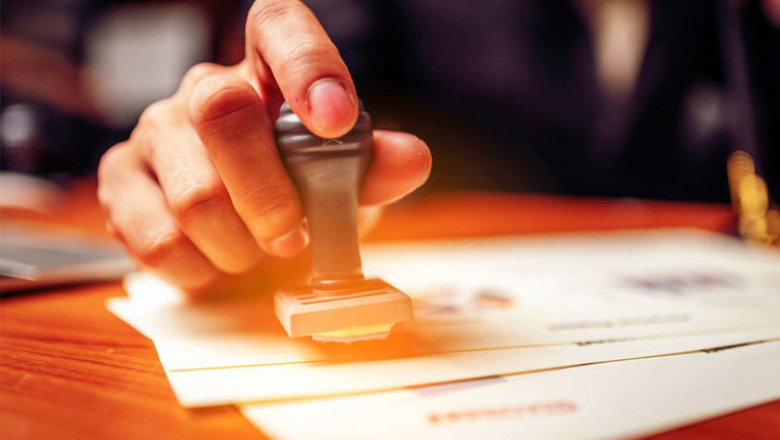views
Immigrating to a new country is a life-changing decision that involves numerous legal and bureaucratic steps. Among these, marriage certificate attestation plays a crucial role in ensuring a smooth immigration process for couples. Whether you are relocating for work, education, or family reunification, having a properly attested marriage certificate can prevent unnecessary delays and complications. This article explores the significance of marriage certificate attestation, the steps involved, and how it facilitates a hassle-free immigration journey.
Understanding Marriage Certificate Attestation
Marriage certificate attestation is the process of verifying the authenticity of a marriage document by authorized government bodies and embassies. This legal procedure ensures that the certificate is recognized as valid in the destination country. Without proper attestation, foreign authorities may reject the document, leading to delays in visa processing, residency applications, or even spousal visa approvals.
The attestation process typically involves multiple levels of verification, including authentication by the home country’s notary, state authorities, the Ministry of External Affairs (MEA), and the embassy or consulate of the destination country. Each step confirms that the marriage certificate is genuine and legally binding.
Why Marriage Certificate Attestation is Essential for Immigration
When couples move abroad, they often need to prove their marital status for various purposes, such as applying for a dependent visa, securing family benefits, or enrolling children in schools. An attested marriage certificate serves as undeniable proof of the relationship, minimizing the risk of legal disputes or rejection by immigration officials.
Many countries have strict documentation requirements to prevent fraudulent marriages or illegal immigration. By submitting an attested marriage certificate, couples demonstrate compliance with these regulations, increasing their chances of a successful immigration process. Additionally, attested documents are often mandatory for opening joint bank accounts, purchasing property, or availing healthcare benefits in the host country.
Step-by-Step Process of Marriage Certificate Attestation
The attestation process varies slightly depending on the issuing country and the destination, but the general steps remain consistent. Below is a detailed breakdown:
1. Notary Attestation
The first step involves getting the marriage certificate notarized by a licensed notary public. This step confirms that the document is genuine and has been issued by a legitimate authority.
2. Home Department or State Authentication
After notarization, the certificate must be authenticated by the state government’s Home Department or equivalent authority. This step verifies the notary’s signature and ensures the document complies with state-level regulations.
3. Ministry of External Affairs (MEA) Attestation
The MEA is the central government body responsible for attesting documents intended for international use. Their stamp and signature validate the marriage certificate for global recognition.
4. Embassy or Consulate Legalization
The final step involves submitting the document to the embassy or consulate of the destination country. They verify the MEA’s attestation and provide their own stamp, making the certificate legally acceptable in their nation.
5. Translation (If Required)
Some countries require translated versions of the marriage certificate in their official language. In such cases, the translated document must also be attested to ensure its validity.
Common Challenges in Marriage Certificate Attestation
Despite its importance, the attestation process can be complex and time-consuming. Some common challenges include:
-
Document Rejection: If any step is incomplete or incorrect, authorities may reject the application, leading to delays.
-
Varying Requirements: Different countries have unique attestation rules, making it essential to research beforehand.
-
Long Processing Times: Each level of attestation can take days or weeks, especially during peak seasons.
-
Legal Complexities: Unregistered marriages or certificates with discrepancies may face additional scrutiny.
To avoid these issues, many couples seek professional attestation services that handle the entire process efficiently.
How Attestation Simplifies the Immigration Process
A properly attested marriage certificate eliminates bureaucratic hurdles, ensuring that couples can focus on settling into their new life abroad. Here’s how it helps:
-
Faster Visa Approvals: Immigration officers prioritize applications with complete and verified documents.
-
Legal Recognition: Attestation confirms the marriage’s legitimacy, preventing disputes in the host country.
-
Access to Spousal Benefits: Many countries offer healthcare, tax, and residency benefits to legally recognized spouses.
-
Smooth Family Reunification: Attested documents simplify dependent visa applications for children and spouses.
Conclusion
Marriage certificate attestation is a vital yet often overlooked aspect of the immigration process. By ensuring that your marriage documents are properly authenticated, you can avoid unnecessary delays and legal complications. Whether you choose to handle the process independently or hire professional services, understanding the importance of attestation will help you navigate international relocation with confidence. A smooth immigration journey begins with the right documentation—make sure your marriage certificate is attested and ready for the next chapter of your life.














Comments
0 comment